AI Summary
Are you still having problems with email delivery after setting up WP Mail SMTP? It may be that your sending domain’s DNS records were not added properly, preventing your emails from being authenticated.
This article will explain how to verify the DNS records you added during the WP Mail SMTP setup process.
In This Article
WP Mail SMTP helps improve email delivery for your site by authenticating your emails through one of our supported mailers. This process often involves adding DNS records to the DNS settings of the sending domain for your site.
Your sending domain is the domain of the from email you added to your WP Mail SMTP settings when you configured the plugin.
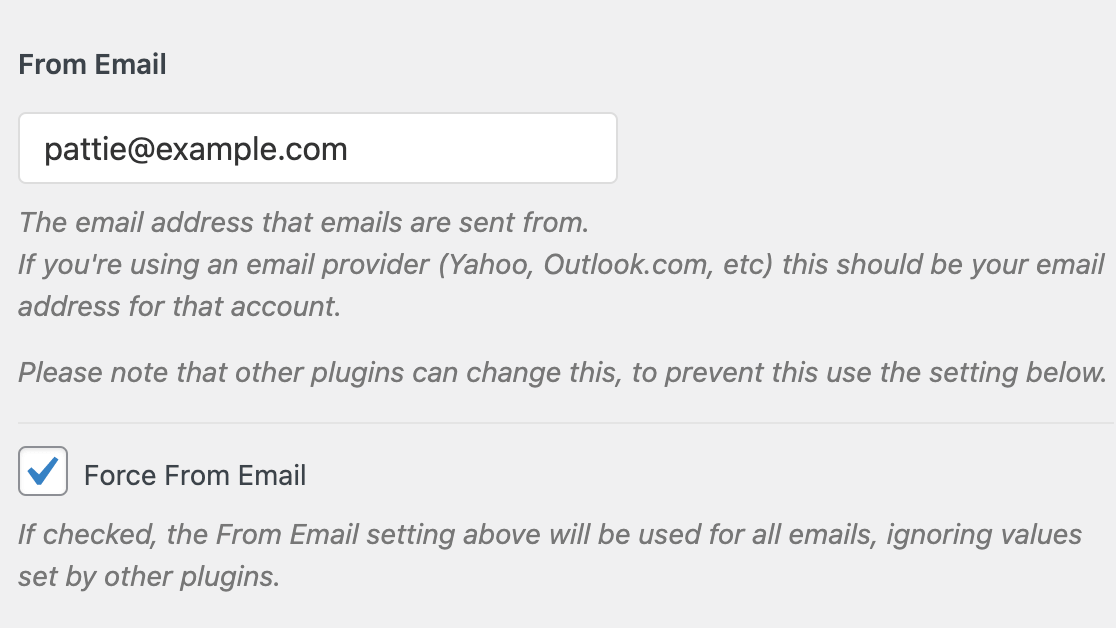
So, if you used the from email [email protected], your sending domain would be example.com.
Note: If you haven’t set up WP Mail SMTP yet, see our complete list of available mailers for step-by-step guides on how to configure our plugin’s settings based on your chosen mailer.
If you set up WP Mail SMTP but are still having email delivery issues, checking to see if your sending domain’s DNS records are verified can help troubleshoot the problem.
Note: Changes to your DNS settings can take up to 48 hours to apply. If you just set up your mailer and added the necessary DNS records, you may try waiting to see if the updates need more time to finalize before doing any further troubleshooting.
Sending a Test Email
The first way to verify your DNS records is to send a test email using WP Mail SMTP’s built-in tool. In your WordPress admin area, go to WP Mail SMTP » Tools and click on the Email Test tab.
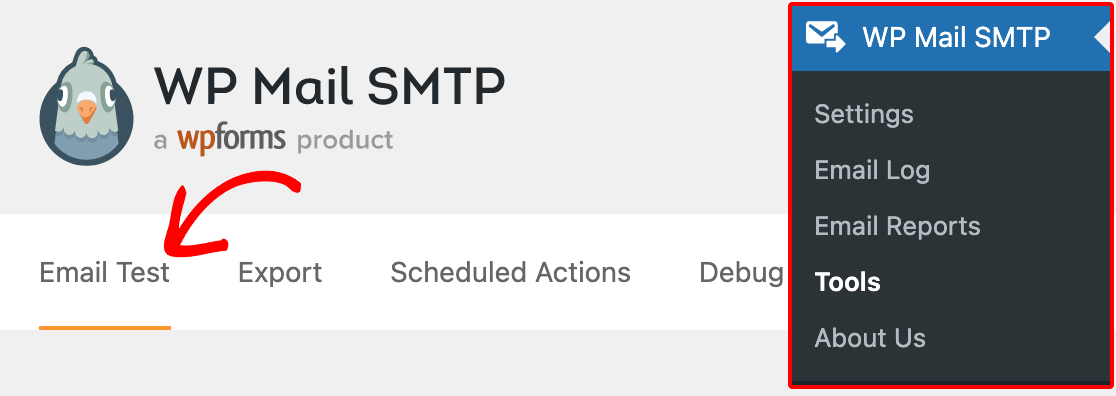
Then enter any email address whose inbox you have access to in the Send To field.
Use the HTML setting to choose whether to send a plain text or HTML email. Unless you know you’ll only be sending plain text emails, we recommend leaving this option toggled on.
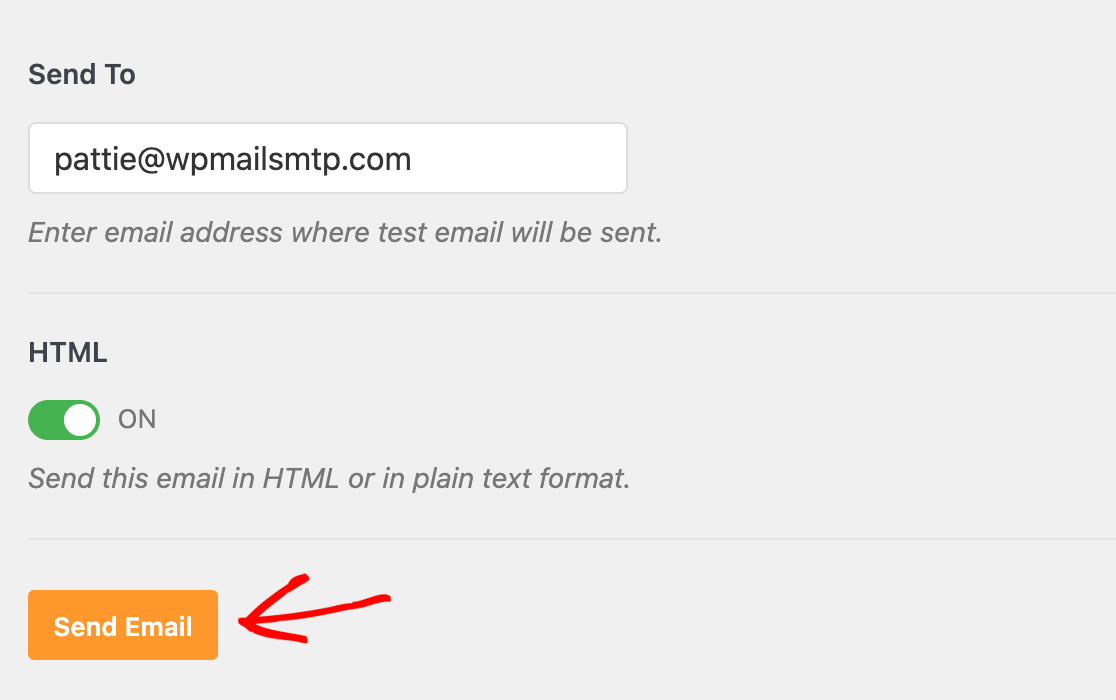
Finally, click the Send Email button.
If DNS records for your sending domain are missing, you’ll see a notice similar to this one instead of a confirmation message.
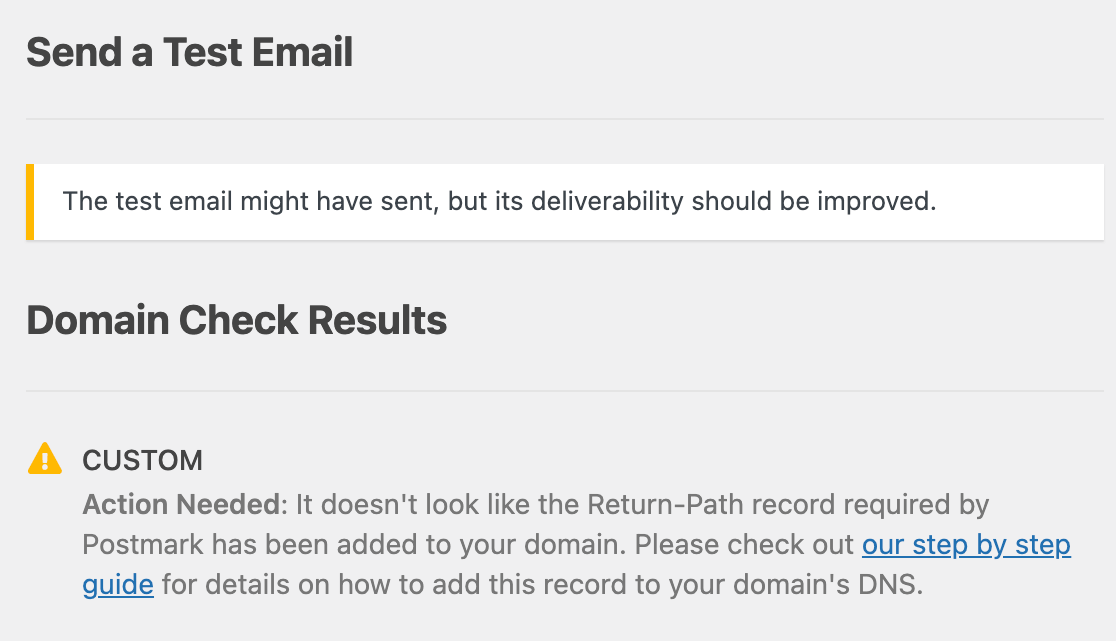
Using the Site Health Tool
Another way you can see if there is a DNS record verification issue for your site is to use WordPress’ Site Health tool. To access it, go to Tools » Site Health in your admin area.
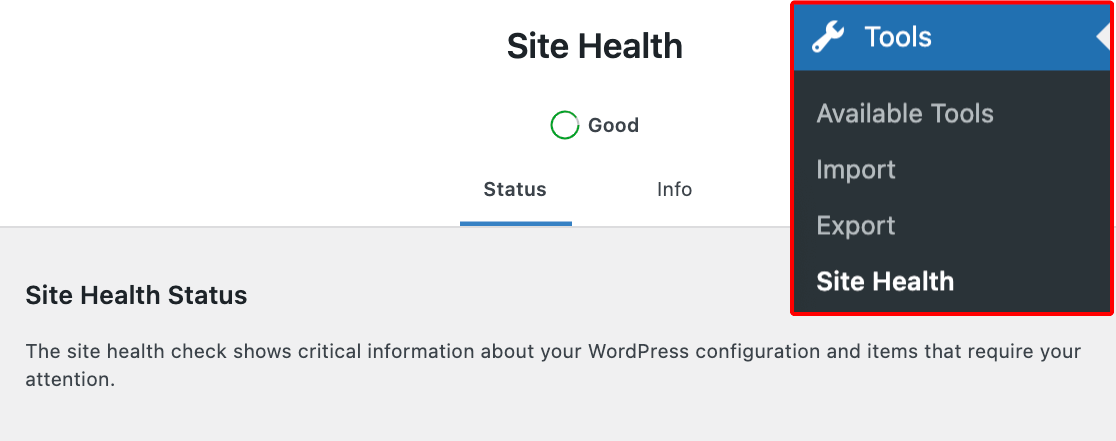
In the Status tab, look under the recommended improvements for an item labeled Email domain issues detected and expand it.
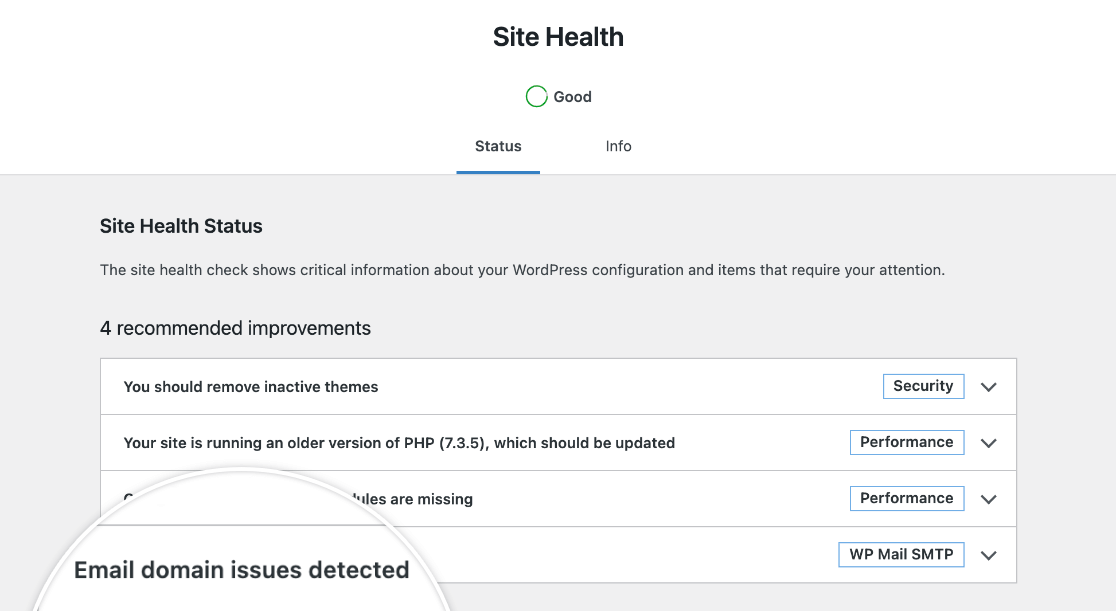
If there is a verification issue with your DNS records, you’ll see a message here reading “Action Needed,” followed by the details of which DNS records required by your mailer are missing.
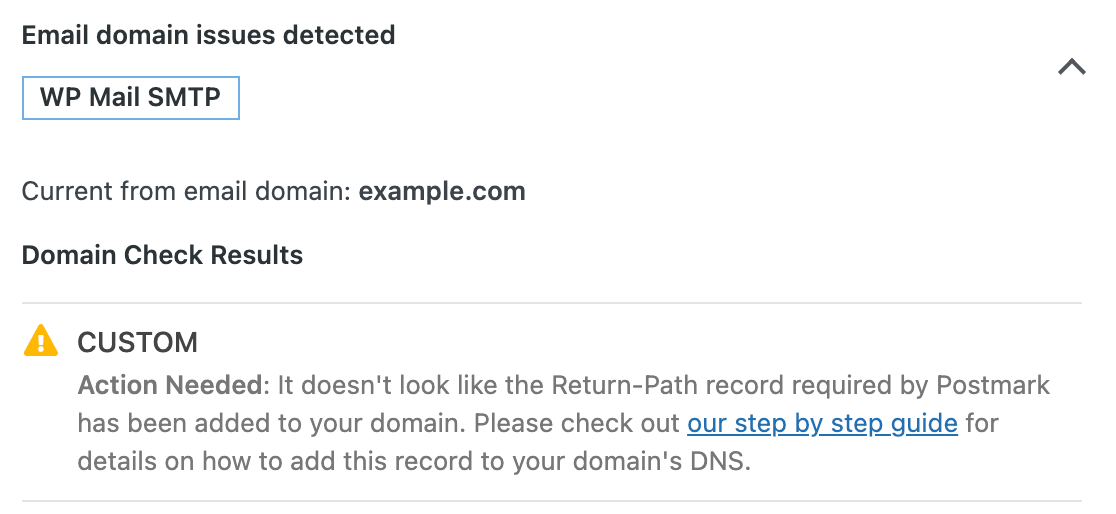
Resolving DNS Records Verification Issues
If you use one of the methods above to determine that there is a problem with verifying the DNS records needed to set up your mailer, there are a few steps you can take to fix the issue.
First, see our guide to adding DNS records to set up your WP Mail SMTP mailer. If you haven’t already added the records to your DNS settings, follow the appropriate steps to do so.
If you’ve tried adding the required DNS records (and waited an appropriate amount of time for your changes to apply) but are still experiencing verification issues, contact your web host’s support team. They should be able to look into your DNS settings and make sure you added the DNS records properly.
That’s it! We hope this article helped you troubleshoot your DNS records verification issues in WP Mail SMTP.
Next, want to learn how to monitor errors in WP Mail SMTP so you can fix them more easily? See our tutorial on debugging sending issues for more details.
